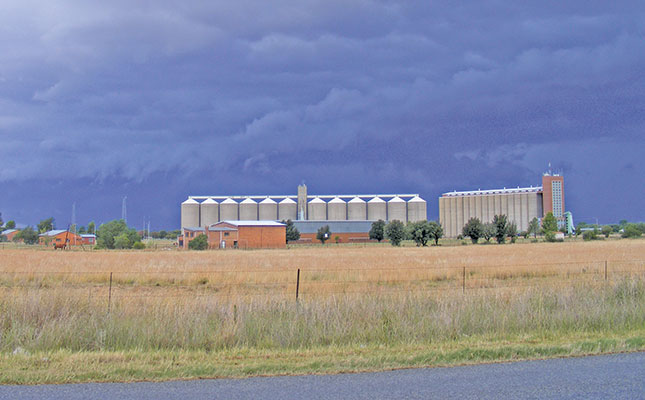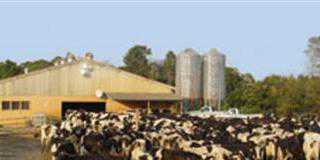
Photo: FW Archive
Numerous new opportunities were proposed at the recent Agbiz Grain Symposium as role players in the grain value chain brought their wish lists to the table. The major focus was on quality differentiation, which would ultimately optimise processing capabilities.
The wish list was as follows:
- A super grade for white maize with improved milling properties such as grain hardness and hectolitre mass (HLM).
- Higher-protein maize; for example, 8% protein instead of 6%.
- Delivering soya bean at a higher moisture content.
- Sunflower with a higher oil content.
Millers, animal feed manufacturers and oil processors all promise to incentivise farmers by paying premiums for these sought-after qualities, and farmers are eager to comply in order to overcome a serious profitability pinch. But the urgent need to unlock every possible opportunity comes at a cost, and there is a catch.
The role players demand a passport system with documented proof of good agricultural practices. However, most of these inherent qualities are genetically based, and expression is subject to the soil type and environment, which are beyond the farmer’s control.
In addition, from a plant-breeding perspective, there is ample evidence of an inverse relation between yield and quality. Will the market fairly compensate producers for the added value if they move to high-quality yet lower-yielding varieties?
The passport system brings in an element of traceability and is critical to the food safety demanded by the consumer. It is also a form of self-regulation, which will build trust in the value chain.
In the grain industry, food safety is currently not audited at farm level as it is with fruit and vegetables. The passport system is meant to reflect reliability and quality, such as ensuring the use of registered pesticides, herbicides and fertilisers.
However, the new wish list has specific requirements for measurable parameters that are genetically based. An added focus of the grain passport system will thus be the documenting of cultivars or varieties planted to assure the buyer of the inherent, desired-quality traits.
Challenges
South Africa’s grain industry, specifically maize, is at the heart of national food security and is competitive on the world market. However, the opportunities outlined by various role players will tighten the cost squeeze on handling and storage.
The cost of capital, insurance, and electricity, together with the deterioration of rural infrastructure, ports and logistics services, creates huge challenges for grain depots that seek to improve their efficiency. Massive tariff increases in electricity, an important dimension of the grain storage industry, are predicted within the next five to 10 years.
Aggregation is a key function of the grain storage and handling sector, and it is doubtful whether the industry will be able to micro-manage these niche products in today’s storage facilities.
The bulk storage facilities that serve the industry today were built in the late 1950s. Currently, there are 283 bulk storage facilities with a total commercial capacity of about 15,7 million tons.
Total storage capacity in the country amounts to about 20 million tons. This is sufficient for the bulk storage of about 19 million tons of grain and oilseeds, which is equal to the average annual production.
The national logistics system associated with whole grain and oilseeds was based on an efficient rail transport system, which has now fallen into disrepair.
Government’s new national infrastructure plan speaks to agricultural infrastructure, the rail network and the privatisation of the branch lines. But this initiative is too late. According to animal feed manufacturers, no new animal feed mills have been built next to train tracks.
Similarly, all the new crush capacity for soya bean (about one million tons built in the past 10 years) is accessible only by road. Logistics costs have therefore increased enormously in terms of total product costs.
But another factor easily forgotten is that grain silos were designed so that deliveries by road could be off-loaded quickly and loaded onto railway trucks. Nowadays, everything is transported by road. The silos are hamstrung when having to also load by road for delivery to animal feed mills and oil processors, which demand good service for in-and-out supply.
Agbiz Grain’s members are involved in more than 67% of the storage and handling for the large range of grain and oilseeds produced in South Africa. Although the industry has become more sophisticated, the silo operators spend huge amounts annually to maintain and repair their infrastructure, which is now around 70 years old.
Equipment for both intake and loading could operate for road and rail simultaneously, but the fact that all in- and out-bound logistics is now by road limits capacity, curtailing how fast and effectively a facility can operate.
Despite industry supply chain initiatives, the reality is that what was once a highly efficient system is now subject to delays. Dispatching grain and oilseeds by road has created a fundamental shift in silo operations.
Niche opportunities
The proposals based on niche market opportunities for milling, animal feed manufacturing and oil processing also require the identity preservation (IP) of such unique grains and oilseeds.
In addition to the general infrastructure for bulk management not always being operationally geared towards such actions, this would also place tremendous pressure on bin allocation at a silo. Each grain and oilseed type has several grades all accommodated in separate bins.
If such commodities are delivered at unacceptably high moisture levels, the grain must be dried or placed in an aeration bin, adding to the number of bins required.
If novel products have to be isolated and stored on their own, not only will more bins be required, but these would probably not be fully utilised. Storage operators thus stand to lose money, as they will have numerous half-full bins.
At no stage did the millers, animal feed manufacturers and oil processors promise to incentivise the storage operators by paying premiums for the increased complexity of management, acquisition of specialised equipment, use of bins for which there is no critical mass of product, and the administration of the passport system.
In addition, while the storage operator can safeguard the integrity of the quality-differentiated commodity, no agribusiness can guarantee the continuous supply of it, despite processors’ willingness to pay a premium to the farmer.
Not all facilities use the same equipment to determine the quality parameters for unique grains and oilseeds. Participating in such niche markets will require storage operators and all other role players to participate in a proficiency testing scheme such as the ring tests run by the Southern African Grain Laboratories (SAGL).
Exactly what millers require
The passport system is a valuable tool for maintaining quality standards in the grain industry. The individuals in the value chain all have a role to play. Animal feed manufacturers, traders and oilseed processors demand that producers fill in the required information and hand the passport in at the storage operator on delivery.
Millers have realised that milling efficiencies could be improved if both grain hardness and HLM were higher. Such a commodity would result in optimal de-germination, since there is not a mixture of both hard and soft maize going through the system.
But that would require a change to the white maize grading regulations. It will not affect other grades, but incentivise farmers to produce exactly what maize millers require.
Millers will benefit from better extraction of the raw material, assisting with throughput in the mills and producing more with the same machinery, making the process more efficient and improving flour quality. They argue that improved milling properties of maize will also benefit the farmers and silo operators. Farmers stand to gain from higher HLM as it relates to an increase in grain density, meaning higher yields. Silo operators will benefit in that higher HLM enhances storage efficiency.
The milling industry will remunerate grain producers growing the right variety only if the hardness and HLM make the higher requirement for that new grade: a super-grade white maize (WM SG).
Apparently, a large number of maize varieties already comply and can be added to the list of super grains, but the millers recommend that all cultivars be evaluated by the SAGL so that it can be determined which existing varieties qualify as WM SG.
Plant breeders will also have to subject new cultivars to these quality tests. This is where the passport system comes into play so that farmers can produce evidence of the correct variety.
Millers are of the opinion that WM SG will become the dominant maize in South Africa, and even beyond our borders, as that is what all millers want. That would mean the bulk of the grain consignments are no longer a niche product, but stored together, growing into a new highly desirable commodity.
Animal feed manufacturers promise farmers a premium for higher-protein maize. Maize is a standard component of livestock diets, where it is used as a source of energy. As protein is an essential nutrient required for the proper nutrition of all animals, a level of 8% protein instead of 6% will be a better source of amino acids, making their process more efficient and improving feed quality.
Such niche products will benefit the industry, especially producers, including, potentially, contract farmers and developing farmers.
Next article, Purnell discusses niche products in the oilseeds industry, as well as some of the practical challenges that the introduction of the passport system for grain certification might pose.
Email Mariana Purnell at [email protected].











